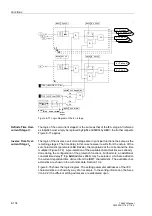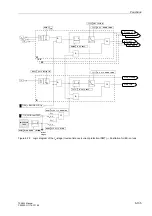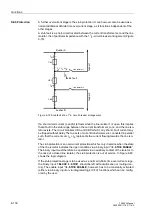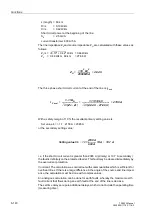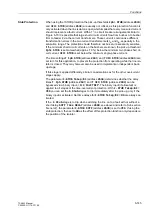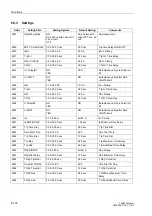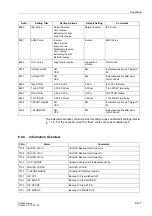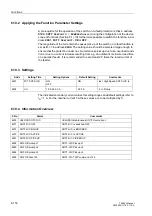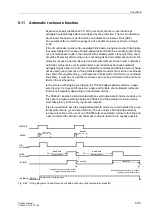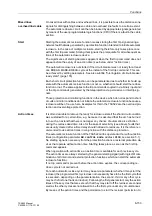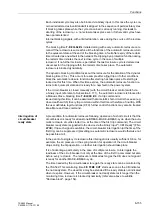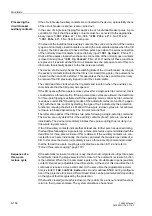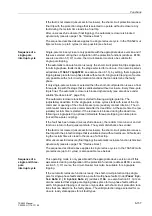
Functions
6-144
7SA522 Manual
C53000-G1176-C119-2
Inverse Time Over-
current Stages
IP, 3I0P with
ANSI–curves
In the case of the inverse overcurrent stages, various characteristics can be selected,
depending on the version of the device and the configuration (Section 5.1, address
). For the ANSI–curves (address
%DFN8S2&
=
72&$16,
) the follow-
ing are available in address
,QYHUVH
,
6KRUWLQYHUVH
,
/RQJLQYHUVH
,
0RGHUDWHO\LQY
,
9HU\LQYHUVH
,
([WUHPHO\LQY
, and
'HILQLWHLQY
The curves and equations that the curves are based on, are shown in the technical
data (Section 10.9).
For the setting of the current thresholds
(address
(ad-
dress
) the same considerations as for the overcurrent stages of the definite time
protection (see above) apply. In this case it must be noted that a safety margin be-
tween the pick-up threshold and the set value has already been incorporated. Pick-up
only occurs at a current which is approximately 10 % above the set value.
The above example shows that the maximum expected operating current may directly
be applied as setting here.
primary:
Set value IP = 630 A,
secondary: Set value IP = 5.25 A, i.e. (630 A / 600 A) · 5 A.
The time multiplier setting
(address
) is derived from the
grading coordination plan applicable to the network. If implemented as emergency
overcurrent protection, shorter tripping times are advisable (one grading time step
above the fast tripping stage), as this function is only activated in the case of the loss
of the
local
measured voltage.
The time multiplier setting
(address
) can usually be set
smaller according to a separate earth fault grading plan.
In addition to the current dependant time delay an additional constant time length de-
lay can be set if required. The setting
(address
for phase currents)
(address
for earth currents) are in addition to the time delays
resulting from the set curves.
The setting parameter
(address
) determines if it is possible
to use the binary input “
!2&,QVW75,3
” (F.No.
) to bypass the trip delays
(address
) including the additional time
(address
)
and
) including the additional time
(address
). The binary input (if it is assigned) is common to all stages of the over-
current protection. With the setting
=
<HV
it is therefore deter-
mined that the I
P
–stage trips without delay following pick-up if an operate signal is
present at the binary input; with the setting
=
1R
the set time de-
lays always come into effect.
If the IP-stage is to retrip when switching the line on to a fault with or without a short
delay,
(address
, see above and refer to Sub-section “Gen-
(address
) is set to Yes. We recommend, how-
ever, not to choose the sensitive setting for the switch on to a fault function as ener-
gyzing of the line on to a fault should cause a large fault current. It is important to avoid
that the selected stage picks up in a transient way during line energization.
Summary of Contents for siprotec 7SA522
Page 20: ...7SA522 Manual C53000 G1176 C119 2 ...
Page 64: ...7SA522 Manual C53000 G1176 C119 2 ...
Page 89: ...SIPROTEC 4 Devices 4 25 7SA522 Manual C53000 G1176 C119 2 Figure 4 20 CFC Logic example ...
Page 408: ...7SA522 Manual C53000 G1176 C119 2 ...
Page 456: ...7SA522 Manual C53000 G1176 C119 2 ...
Page 516: ...7SA522 Manual C53000 G1176 C119 2 ...
Page 620: ...Appendix B 48 ...





